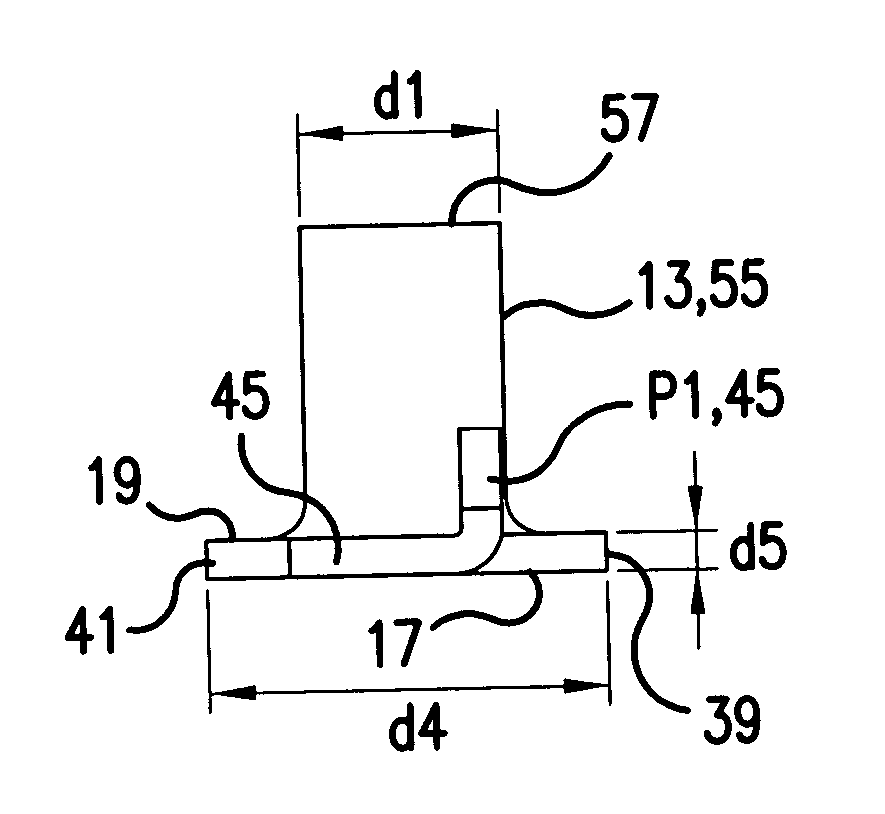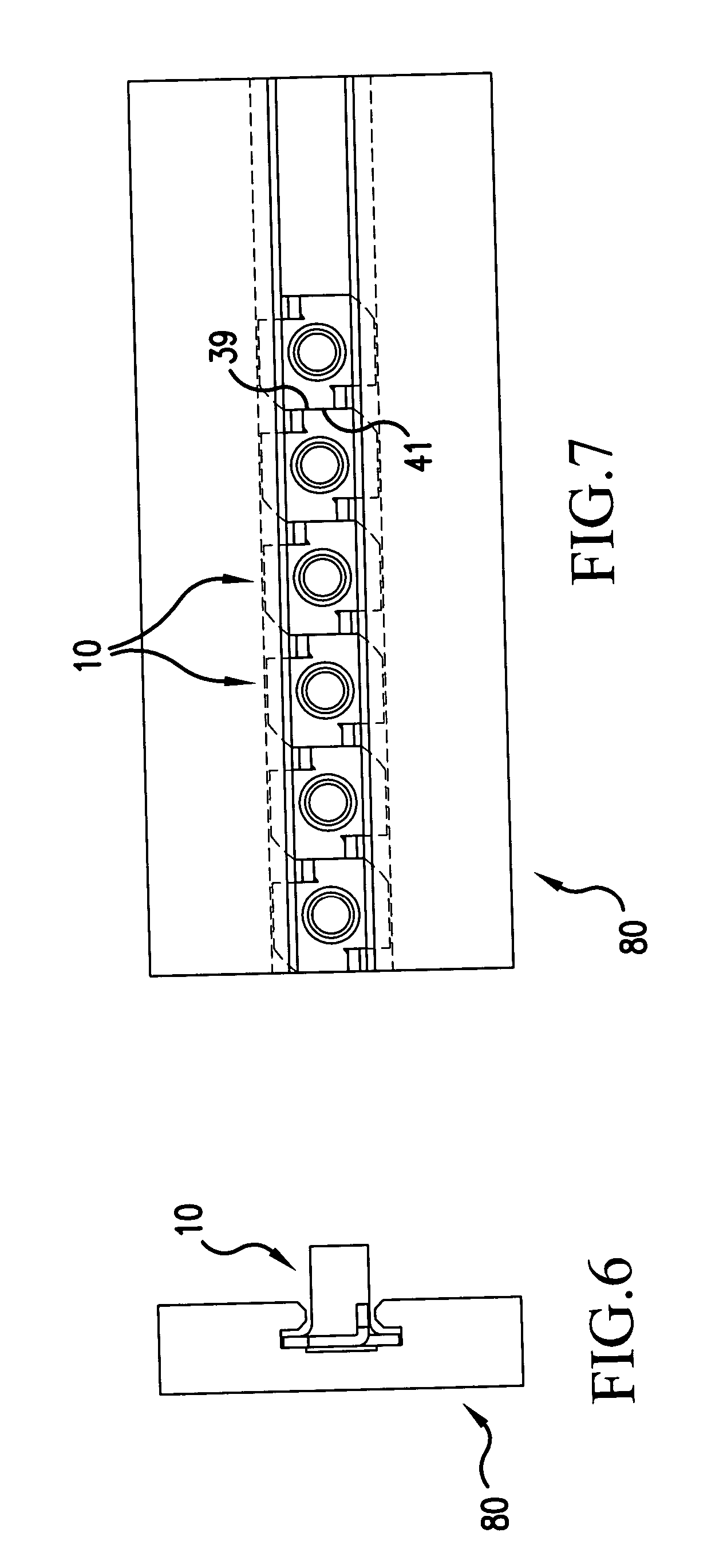Fastener with prongs
a technology of prongs and fasteners, applied in the field of fasteners, can solve the problems of difficult to ensure that there is sufficient penetration into the sides of the hole, the difficulty of fasteners, and the difficulty of riveting fasteners, and achieve the effect of preventing shingling
- Summary
- Abstract
- Description
- Claims
- Application Information
AI Technical Summary
Benefits of technology
Problems solved by technology
Method used
Image
Examples
Embodiment Construction
[0029] With reference to FIGS. 1-5, the inventive fastener is generally designated by the reference numeral 10 and is seen to include a flange 11 and a shaft 13 extending therefrom. The shaft 13 has an axis of elongation 15 (FIG. 4) that is perpendicular to the bottom surface 17 of the flange 11.
[0030] The flange 11 also has a top surface 19 (FIG. 1) extending upwardly therefrom.
[0031] As best seen in FIGS. 1 and 2, the flange 11 has a periphery 37 including one pair of flat side walls 39 and 41 opposed from one another about the periphery of the flange 11, a second pair of opposed flat side walls 43 and 45, and arcuate side walls 47, 49, 51 and 53. In one embodiment, each of the four flat walls and the four arcuate walls is generally perpendicular to the top surface 19 of the flange 11.
[0032] Two prongs P1, P2 may be formed by making cuts C1, C2 in opposing straight sides 39, 41 adjacent to the diagonally opposing arcuate corners 47, 51, and then bending at points B1, B2 periphe...
PUM
 Login to View More
Login to View More Abstract
Description
Claims
Application Information
 Login to View More
Login to View More - R&D
- Intellectual Property
- Life Sciences
- Materials
- Tech Scout
- Unparalleled Data Quality
- Higher Quality Content
- 60% Fewer Hallucinations
Browse by: Latest US Patents, China's latest patents, Technical Efficacy Thesaurus, Application Domain, Technology Topic, Popular Technical Reports.
© 2025 PatSnap. All rights reserved.Legal|Privacy policy|Modern Slavery Act Transparency Statement|Sitemap|About US| Contact US: help@patsnap.com



